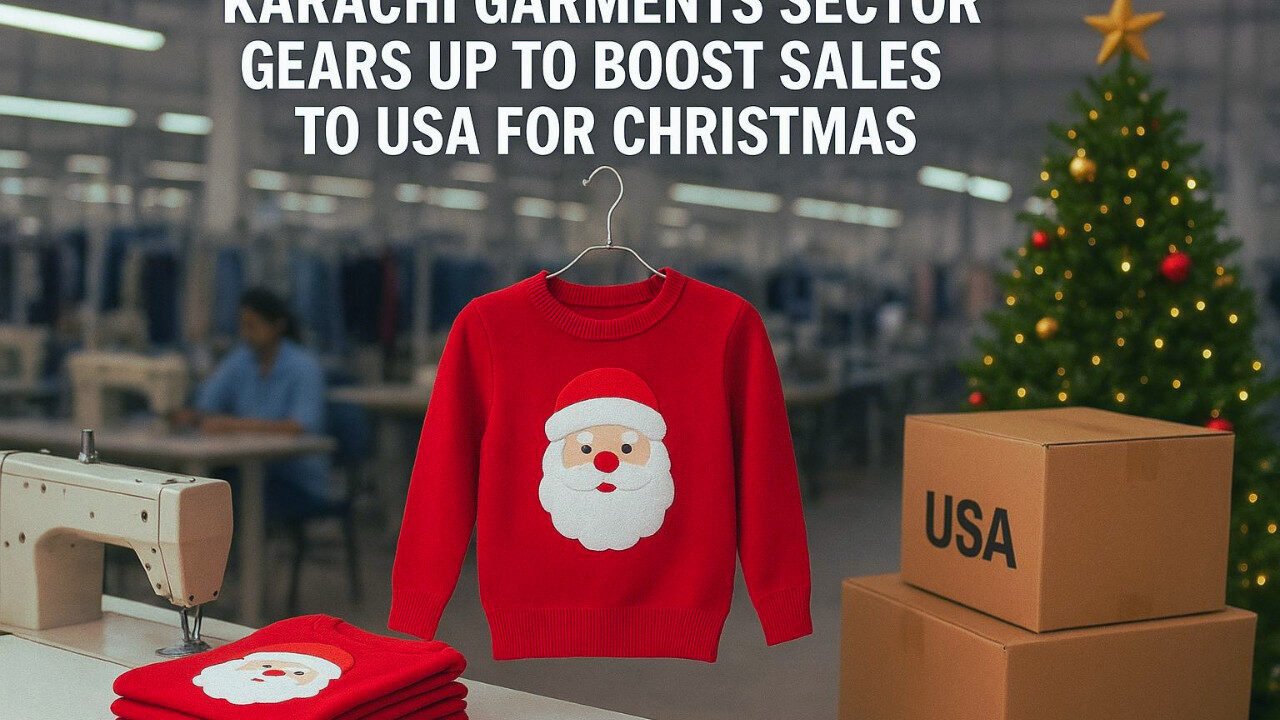By Ahmed Khan
Snowflakes aren’t falling yet in the U.S., but Karachi’s garment factories are already buzzing like Santa’s workshop. As American shoppers prepare for the holiday season, the Karachi garment industry is working round the clock to meet a surge in export orders from major retailers abroad.
For Karachi’s apparel makers — the heart of Pakistan’s textile exports — these months are the busiest of the year. Between October and December, orders for sweaters, hoodies, and winter wear flood in from U.S. brands eager to stock their shelves for Christmas shoppers.
This year, exporters say, demand is climbing again after months of inflation, supply chain bottlenecks, and sluggish sales that hit the global fashion market.
Factories in Karachi Running at Full Capacity
According to this reporter, many factories in Karachi’s main industrial zones — Korangi, SITE, and North Karachi — are running at full capacity to meet shipping deadlines. Some have doubled their work shifts and brought in seasonal workers to handle the pressure.
“Christmas is always the busiest time of the year for us,” said Munnawar Rajput, a leading exporter from Korangi. “We’re focusing on sweaters, hoodies, jackets, and knitwear — all the favorites of U.S. holiday shoppers. Big retail chains that had cut back last year are back with strong orders.
Early Orders Show Rising Demand from U.S. Buyers
Rajput explained that American buyers began booking shipments as early as July to make sure products reach stores before the December rush. With long sea routes and busy ports, Karachi exporters are now finalizing deliveries to meet those tight timelines.
Pakistan’s garment sector still holds a strong edge in global markets. Low production costs and a skilled workforce make it competitive, while Karachi houses some of the most advanced textile units equipped with modern machinery and strict quality checks that meet international standards.
Rising Costs Threaten Exporters’ Profit Margins
But there’s a downside to the cheer. Rising energy prices, currency fluctuations, and general inflation are squeezing exporters’ profits. Port congestion and steep global freight costs are adding to the headaches.
“Demand is good, but profits are shrinking,” said Baseer Nazar, who owns a garment factory in SITE. “Energy costs change overnight, and exchange rates are unpredictable. Still, we’re counting on Christmas orders to help steady our cash flow.”
Focus on Quality, Innovation, and Sustainability
He added that consistency in quality and punctuality are essential to keeping American buyers happy, as they are known for their strict standards.
To stay competitive, many Karachi firms are investing in quality assurance teams, sustainability certifications, and digital tracking systems that help buyers monitor every step of production.
Some exporters are also turning toward higher-value clothing categories such as fashion outerwear, athleisure, and festive wear. “U.S. consumers want clothes that look good and don’t break the bank,” said Baseer. “So we’re focusing on creative designs and premium finishes to stay in the game.”
Karachi Leads Pakistan’s Apparel Export Growth
Industry experts expect Pakistan’s garment exports to post steady growth in the last quarter of 2025, powered by seasonal demand from Western markets. With Karachi’s bustling factories leading the charge, the city remains the driving force behind Pakistan’s apparel success story.
Author Profile
-
Ahmed Khan is a business journalist who specializes in Pakistan’s financial markets, corporate earnings, and economic policy.
With a keen eye for market trends and investor behavior, he breaks down complex financial developments into clear, insightful stories for everyday readers.





